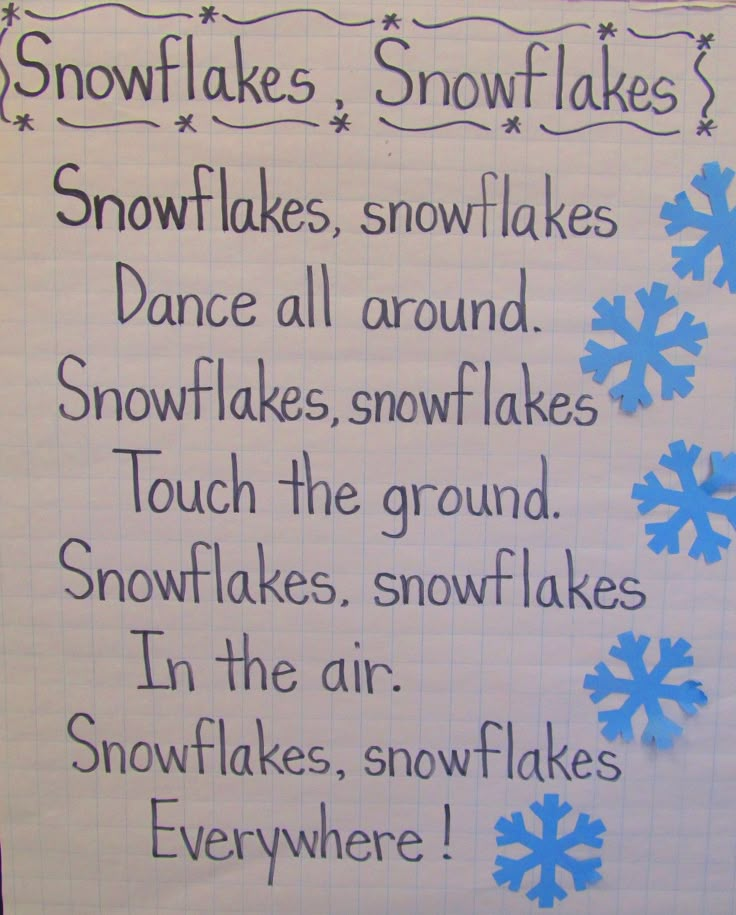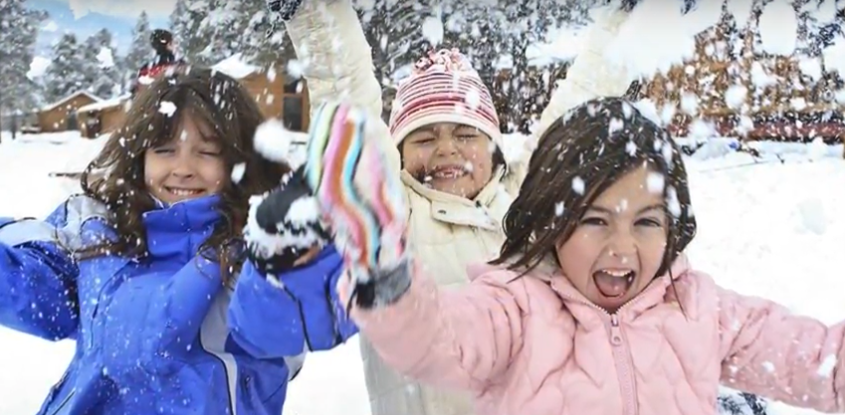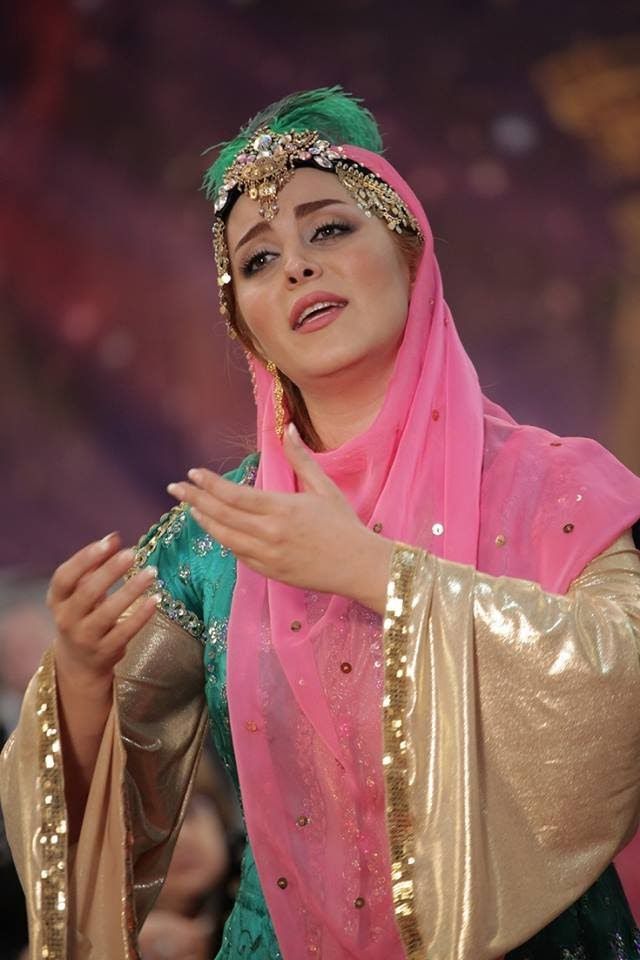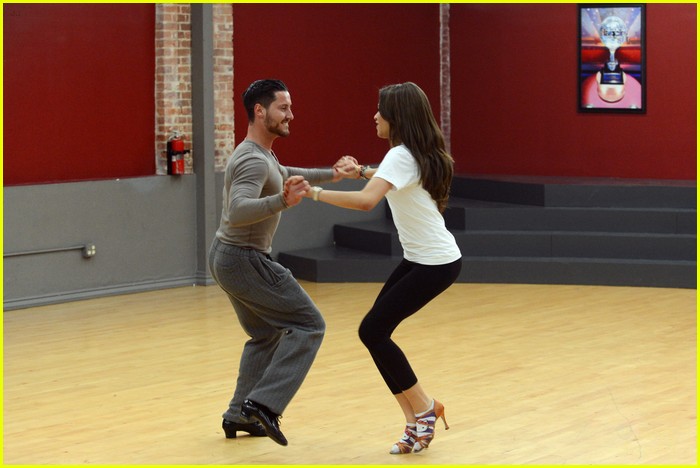How to do the snow day dance
How to Snow Dance the Right Way
How To Call Down a Snowstorm This Winter With the Right Snow Dance
Snowseekers. We’re a strange breed. The never-ending obsession with deep snow days turns us into certifiable weirdos—eccentric morons whose bizarre quirks alienate us from the general population.
The most curious of these quirks must be the conviction that we have the power to call down precipitation from the heavens above by appeasing the Snow Gods with a passionately executed ceremonial “Snow Dance”. In most circles, this belief would be enough to send us straight to the loonie bin.
But the power of the Snow Dance is accepted as truth amongst sledders, because…well because without faith, what chance have we got? It just has to be true. And the more people doing it has to increase the odds, right?
But first, we must understand that one Snow Dance ain’t like the other. And, like any good ritual, it’s best not to go in blind. Here are a few examples to help make sure that your dry-spell booty-shakin’ yields the proper results this winter.
How to Snow Dance the Right Winter Storm
The Duck Walk
Right around the same time Joseph Bombardier was assembling his first Ski-Doo in 1935, this particular dance was first being performed by the legendary guitarist, T-Bone Walker. It would later be popularized by Chuck Berry in the 50s, as he hopped one-legged across the stage in a squat, wailing out riffs on his axe during performances of Johnny B. Goode.
It’s a well-known made-up fact that doing a kilometer-long Duck Walk in a full-faced helmet on a hot summer day guarantees a winter that’ll totally “razz your berries”.
The Moonwalk
(not to be confused with The Boondock)
It’s hard to talk about the moonwalk in this day and age. It’s largely associated with a man who should never have been trusted with anyone’s children. But it’s worth noting that MJ didn’t actually invent the moonwalk, and that its origins can be traced as far back as Cab Calloway in the 1930s. James Brown did it as well, as did a handful of other performers over the years.
It’s largely associated with a man who should never have been trusted with anyone’s children. But it’s worth noting that MJ didn’t actually invent the moonwalk, and that its origins can be traced as far back as Cab Calloway in the 1930s. James Brown did it as well, as did a handful of other performers over the years.
Either way, moonwalking has little to no effect on precipitation. But you’ll likely only be able to do it in a pair of thick wool socks on a hardwood floor, so at least your toes will be ready for the first cold snap of the season.
The Worm
Strangely enough, there’s no Wikipedia entry for The Worm, so we can only assume that it was invented by some guy who dropped his keys under the truck. As far as moves go, it’s fairly self-explanatory. But it’s about as good for your spine as loading your own sled without a ramp.
But it’s about as good for your spine as loading your own sled without a ramp.
That being said, if anyone within your crew of riding buddies is able to successfully execute The Worm, it is rumoured to guarantee a snowfall of 45 cm on the eve of January 7th.
The Dougie
The more people doing The Dougie in the offseason, the deeper the winter’s going to be. And it’s one of the easiest dance moves out there—all you do is step side-to-side with a little more style than usual, and maybe even run your fingers through your hair while you’re doing it for increased effectiveness.
Anyone can learn. So teach ALL your friends how to Dougie, especially the ones named Doug. Because Dougs doing The Dougie make it snow even harder.
Twerking
If you thought this move was reserved for ladies in yoga pants, you’re as wrong as wrong can be. It’s a secret weapon employed by sledders who live in drier climates, who need to rustle up storms with the most aggressive move they can muster.
The harder the twerk, the deeper the following day, even if you live in the Rocky Mountains. You can’t argue with science.
It’s plenty easy these days to find hyper-sexualized music videos online with these kind of moves, so you probably don’t need our help polluting your browser history. Have fun.
Of course, this list is anything but exhaustive. So you’ll just have to use your imagination for The Robot, The Sprinkler, The Watusi, The Achy Breaky Heart and all the others. And remember, as ridiculous as any of these moves might seem, Snow Dances are better for the environment than burning a stack of old snowmobiles.
And remember, as ridiculous as any of these moves might seem, Snow Dances are better for the environment than burning a stack of old snowmobiles.
Praise Üllr!
– Travis
These two guys could bring on the next Ice Age!
- Tags
- #dougie
- #duck walk
- #moonwalk
- #snow dance
- #snow storms
- #travis mcnabb
- #twerking
7 Snow-Day Rituals to Pray for Powder – Bluebird Backcountry
Whether it’s wearing your pajamas inside out or tucking a spoon under your pillow, there are dozens of snow day rituals out there. While the scientific community hasn’t weighed in on exactly how effective these methods are, one thing is certain: You’re never too old to pray for snow.
The spoon-under-the-pillow trick is a classic snow day ritual. Photo: Dstudio BCN via Unsplash
1. Put a spoon under your pillow.
This is one of the older snow day rituals in the US, and it’s a common one throughout the East Coast. You can use a teaspoon or soup spoon—it doesn’t matter too much (Bluebird Backcountry Storytelling Lead Corey Buhay says she sometimes made do with a wooden spoon growing up in Georgia.) But why not throw in the whole cutlery drawer just to play it safe?
2. Wear your pajamas inside out.
This is another common East Coast tradition (some suspect it originated in New Jersey) and a tried-and-true method for coaxing enough snowfall to cancel school. Want to go the extra mile? Some recommend wearing your PJs both inside out and backwards.
Eh, just throw in a whole pitcher. Better safe than sorry. Photo: Tomas Listiak via Unsplash
3. Flush ice cubes down the toilet
This snow day ritual is a Midwestern classic. “Growing up in Ohio, our tried and true method was flushing ice cubes down the toilet and then doing a snow dance,” says Bluebird Ad Wrangler Erin Moeller. Some recommend flushing a cube for every inch you want. Some say a cube for every snow day. (Maybe flush 18 or so just to be sure?)
“Growing up in Ohio, our tried and true method was flushing ice cubes down the toilet and then doing a snow dance,” says Bluebird Ad Wrangler Erin Moeller. Some recommend flushing a cube for every inch you want. Some say a cube for every snow day. (Maybe flush 18 or so just to be sure?)
4. Do a Snow Dance
People have been dancing to manifest weather since time immemorial, but the American version of the snow dance may have its roots in Native American tradition. In fact, traditional dances have been followed by significant snowfall both in the Lake Tahoe region and in Vail, Colorado.
When was the last time Junior actually used that white crayon, anyway? Photo: Kristin Brown via Unsplash
5. Put a white crayon in the freezer.
The crayon trick has some interesting regional variations. Some recommend leaving it in the freezer overnight, while others swear by tucking the crayon under your pillow just before bed. Others say you’ve got to put it on a windowsill. Regardless, we recommend waiting for the kids to fall asleep before pillaging their school supplies.
Regardless, we recommend waiting for the kids to fall asleep before pillaging their school supplies.
6. Stack coins on the windowsill.
Some folks swear by taping a quarter to the window or stacking pennies on your windowsill. We’re not sure where this one originated, but we like the quantitative component: Legend has it that you’ll get an inch of snow for every penny you stack.
Ice cream is never a bad idea. Photo: American Heritage Chocolate via Unsplash
7. Eat ice cream the night before.
We had a hard time confirming the regional origin or the success rate for this snow day ritual. But what does it matter? We’ll always take another excuse to eat ice cream.
tanka, circle, spring round dance, dance traditions in Russian regions.
Publications of the Traditions section
Who and when was the first to start a round dance in Rus' is not known for certain over the years. The most ancient dance was originally part of a pagan rite - the worship of Yarila, the powerful god of the sun. And "walking after the sun" was firmly established in Slavic culture for many centuries. Natalya Letnikova delved into round dance traditions in Rus'.
And "walking after the sun" was firmly established in Slavic culture for many centuries. Natalya Letnikova delved into round dance traditions in Rus'.
Salting
Alexey Savrasov. Round dance in the village. 1874. State Tretyakov Gallery
And also Karagod, tank, circle, street. Many names of the dance loved by the people. According to Dahl - gatherings of rural youth in the free air for dancing with songs. According to the established tradition, young girls, having gone out into the street, began to "play songs" or started "jokes" when they met at the fairground. In the center of events, as a rule, was a round dance. A woman, the most groovy in the district. Choreographer and choir director by vocation - she started songs and came up with new dance pictures.
A round dance for a peasant girl, which for a young lady from high society is one of the ways to look after her husband. Somewhere the round dance age is from 12 years old, and somewhere later. The main thing is the number of daughters in the household. So the family sent, as if to a ball, first the older girls. The younger ones were kept in the shadows for the time being. In the round dance, the guys looked after their brides: is it good, is it a peahen, does it sing loudly.
The main thing is the number of daughters in the household. So the family sent, as if to a ball, first the older girls. The younger ones were kept in the shadows for the time being. In the round dance, the guys looked after their brides: is it good, is it a peahen, does it sing loudly.
Round dance from south to north
Spring round dance "luleish" songs
Song and choreographic tradition of the Verkhovazhsky district
Round dance tradition of the village of Lutny
Hand, little finger or scarf, belt, wreath. The connecting link in the round dance can be different. And each region has its own traditions. In the North, restraint is in honor. The girls float in a circle sedately and calmly. And the songs get more and more drawn out and melodious.
For example, in Komi on Krasnaya Gorka, seventeen folklore song plots that have developed over the centuries have been used. Each of the figures should be performed to a specific song and in its own rhythm: from slow at first to swift. The action is filled with images: men and women are separated side by side, the girls drop their headscarves, which the guys pick up. Round dance is a symbol of matchmaking.
The action is filled with images: men and women are separated side by side, the girls drop their headscarves, which the guys pick up. Round dance is a symbol of matchmaking.
In the central provinces the people were more active. Round dances started merrily and carefree, with stomps and claps, with provocative songs. The further south, the hotter. Both at the festivities, and in the round dance, which was about to turn into a dance. On warm evenings, the streets are more crowded, and more participants gathered in the round dance.
Round dance all year round
Alexey Stepanov. Round dance
Dancing is an idle occupation. And therefore, round dances were led on time - and on occasion.
In the spring, they played the game "Brook" - a symbol of melting snow. In paganism, the first spring round dances appeased the gods of fertility. On the day of Lada, in a chain, holding hands, they climbed the hills, dedicating a round dance to Mother Earth, calling out spring. In July, they praised Kupala and asked for the ripening of fruits - around the fire and with wreaths. In honor of Beregini, a round dance was led around a birch - a symbol of purity and the patroness of the family and the hearth.
In July, they praised Kupala and asked for the ripening of fruits - around the fire and with wreaths. In honor of Beregini, a round dance was led around a birch - a symbol of purity and the patroness of the family and the hearth.
Read also:
- Cultural code: Christmas cuisine
- Russian Maslenitsa: soundtrack
- Recipes. What a Cossack woman brings to the table
With the adoption of Christianity, round dances started outside of fasting and field work. We started from Holy Week immediately after Easter and to Krasnaya Gorka, sowing season - with a break for the harvest. In the summer - on holidays, like on Trinity. Again, one could think about dances in the second half of August - the autumn ones from Assumption to Pokrov, where meetings, work by fire and gatherings are already beginning.
Round dance science
Round dance in the Kursk province
Game and ornamental. In Rus', they led two types of round dance. Ornaments - no plot, no roles. Know how to walk in circles, braid the figures in rows from a round dance chain. Choreographic intricacies were associated with images of Russian nature. “There was a birch in the field” with branches of a white-trunked tree that had barely blossomed in spring.
Know how to walk in circles, braid the figures in rows from a round dance chain. Choreographic intricacies were associated with images of Russian nature. “There was a birch in the field” with branches of a white-trunked tree that had barely blossomed in spring.
Patterns of lace makers and wood carvers were seen in round dances. Folk art, in turn, resembled a round dance snake on lace or a carved board. To captivate with new figures, complex and ornate, is a whole art and the task of an ingenious round dance.
Theatrical performance with the main characters and the plot, coupled with walking in circles. Feature of game round dances. A story song, characters that express their character through facial expressions and dance figures. They depicted not only people, but also animals and birds. They danced round dances on topical topics: the choice of a bride or groom, family matters, and even with social overtones - ridiculing the landowners.
What the dance is drawing
Boris Kustodiev. Round dance
Round dance
Round dance was danced closed, moving in a circle, and line upon line or snake. On the basis of traditional dance, each province and even the village created their own dance pictures. A circle within a circle, two circles side by side, or overflowing into each other in a figure-of-eight.
Each drawing of a round dance received its own name: "gate", "eight", "column", "basket", "carousel", pillars, "reins", "wattle", "side to side", "dance" and directly "circle". The main thing is not to forget that a round dance is creativity in its purest form with its own signs and symbols: a wreath is a marriage, a scarf is a pillow, a silk whip is a symbol of humility and strength. The dancers move in a round dance "according to the sun" or "against the sun" - according to old memory.
Tags:
Slavic cultureTraditionsFolkloreTraditions section publications
Instead of morning exercise, dance Bhangra - and get positive for the whole day with this viral video
Turn up the sound "on full" and get positive - this is Gurdip Pandir dancing a ritual Indian dance in Canadian snowdrifts.
Alla Rezyapova
gurdeeppandher | Instagram (The social network is recognized as extremist and banned on the territory of the Russian Federation)
This guy just exudes positive! Gurdeep Pandir is a Canadian of Indian descent. He moved to this harsh climate nine years ago and traveled all over the country to understand it better. Gurdeep has completely settled in the new place, even started his own house in the forests - but he is not going to break away from the roots. He continues to wear a bright turban and dances Bhangra - a dance of joy and happiness.
Bhangra is a traditional Punjabi dance that is fairly easy to repeat. This is a series of jumps and bends of the body under the beats of the Indian double-headed drum. He creates a recognizable rhythm from a weak and a strong beat, on which folk songs and dance are superimposed. This dance perfectly replaces morning exercises, gives strength to muscles and energy.
But this is more than just physical exercise or entertainment, Bhangra has a deep sacred meaning. The farmers who were finishing the harvest were the first to dance it - this dance filled them with faith in their own strength, demonstrated the strength of their spirit and gave them joy from a job well done. So Bhangra became a dance of positivity - and indeed, looking at how Gurdeep dances, at his wide smile, it is impossible not to smile back.
“People dance to be joyful and happy, it's all about happiness,” he explains.
Gurdip recorded his first dance for his friends, but they posted it on the Internet, and the video suddenly became viral. Bhangra was put on restless children so that they would be distracted for a while and leave their mother alone; Gurdeep was invited to dance with the students of the local elementary school; he has performed with the Canadian Forces and TV presenters.
Bhangra has become a real dialogue of cultures: a guy from India, Gurdip Pandir, danced to the bagpipe, a Scottish folk instrument, in the Canadian snows! During the pandemic and self-isolation, this dance has become a symbol of hope and faith in a better future for every Canadian who has just seen this video.











